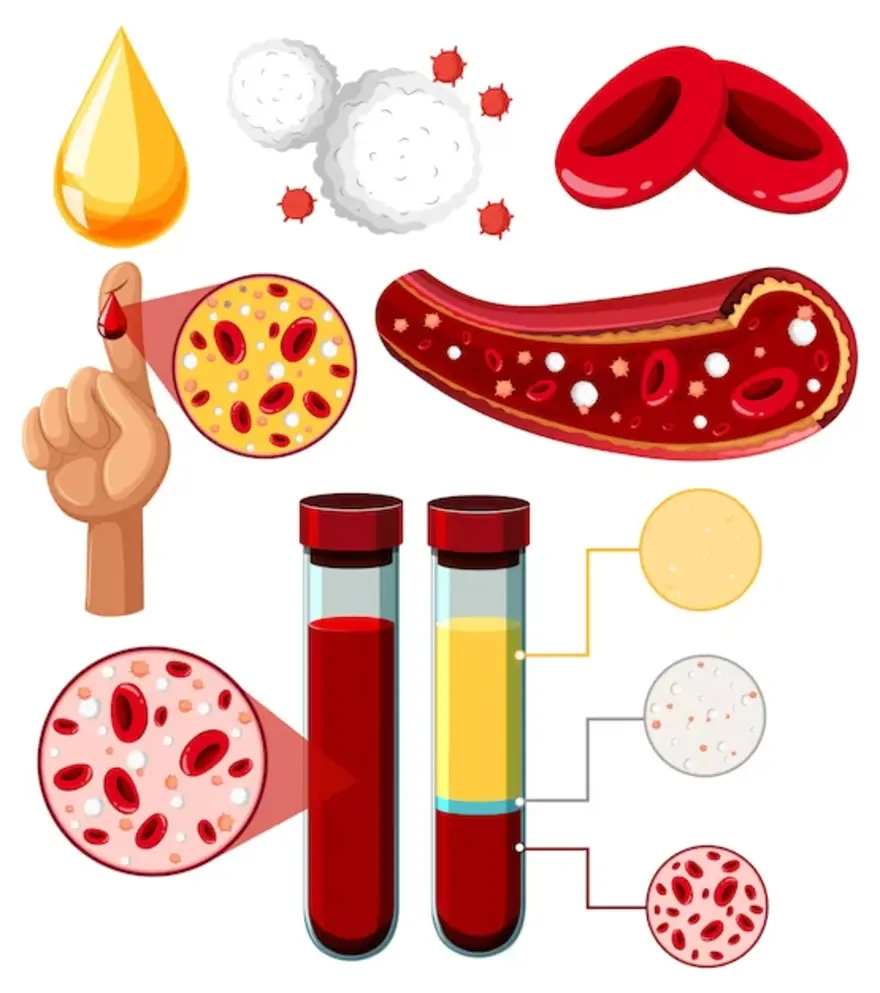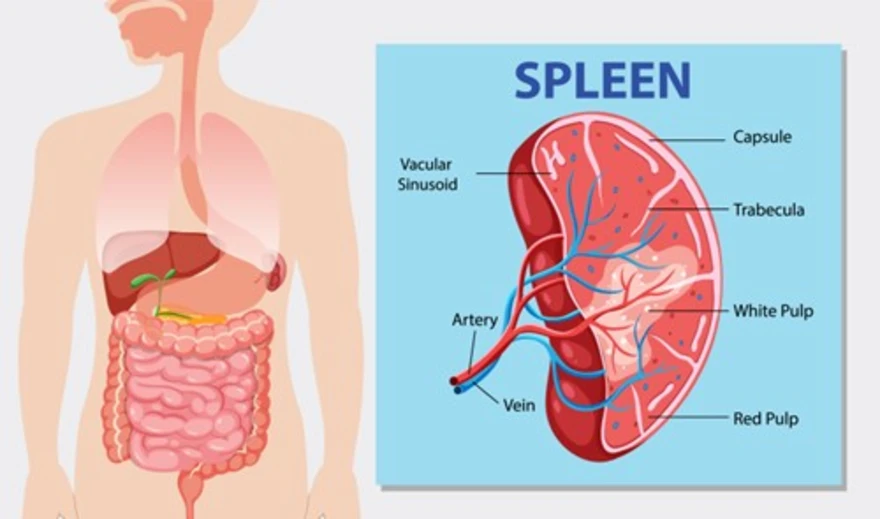Preventive Healthcare
Understanding Marfan Syndrome: Symptoms, Causes, and Treatment Options

Table of Contents
- What is Marfan syndrome?
- Who does Marfan syndrome affect?
- What causes Marfan syndrome?
- What are the symptoms of Marfan syndrome?
- How is Marfan syndrome diagnosed?
- How is Marfan syndrome treated?
- What is my life expectancy with Marfan syndrome?
- What can I do to stay as healthy as possible if I have Marfan syndrome?
- Conclusion
In our journey through life, we encounter various challenges, some visible and others hidden. Marfan Syndrome is one such challenge, a genetic disorder affecting connective tissue, yet its impact resonates deeply within those it touches. From the elongated limbs to some complications present in the heart and blood vessels, understanding Marfan Syndrome becomes paramount. This condition, often overlooked, requires our attention and compassion. In this article, we will discuss the causes, symptoms, and treatment options, aiming to shed light on this complex yet crucial aspect of human health. Join us as we try to explain all about Marfan Syndrome.
What is Marfan syndrome?
Marfan syndrome is a genetic disorder that affects the body's connective tissue, which provides strength and elasticity to various structures such as bones, ligaments, blood vessels, and heart valves. It is characterised by abnormalities in these connective tissues, leading to a range of physical and sometimes life-threatening complications.
Who does Marfan syndrome affect?
Marfan syndrome affects both males and females equally, with a prevalence of approximately 1 in every 3,000 to 5,000 individuals worldwide. It can effect any one. While about 3 out of 4 individuals with Marfan syndrome inherit the condition from a parent who carries the genetic mutation, it's important to note that some cases may occur sporadically due to spontaneous genetic mutations.
What causes Marfan syndrome?
Marfan syndrome is primarily caused by a mutation in the FBN1 gene, which provides instructions for producing fibrillin-1, a protein essential for the formation of connective tissue. This genetic mutation affects the body's connective tissue, leading to the characteristic features and complications associated with Marfan syndrome.
The mutation in the FBN1 gene can be inherited from one affected parent (autosomal dominant inheritance) or occur spontaneously in individuals with no family history of the condition. It is important to note that not all individuals with a mutation in the FBN1 gene will develop Marfan syndrome, and the severity of symptoms can vary widely among affected individuals.
Other genes, such as TGFBR1 and TGFBR2, have also been associated with conditions that have overlapping features with Marfan syndrome, further highlighting the complexity of the genetic basis of this condition.
What are the symptoms of Marfan syndrome?
Marfan syndrome has various symptoms affecting multiple body systems. Common Marfan syndrome symptoms are explained here:
Physical appearance
Individuals with Marfan syndrome often have long limbs, fingers, and toes. They may also have a tall and thin body type with disproportionately long arms and legs compared to their torso.
Dental issues
Dental problems such as overcrowded teeth, high-arched palate, and dental crowding are common.
Eye problems
Marfan syndrome can affect the eyes, leading to conditions such as nearsightedness (myopia), dislocated lenses, and increased risk of retinal detachment.
Heart and blood vessel problems
The most serious complications of Marfan syndrome symptoms can be found in the heart and blood vessels. These can include aortic aneurysm (weakening and enlargement of the aorta), mitral valve prolapse, and other defects in the heart valves.
Lung changes
Some individuals with Marfan syndrome may experience lung abnormalities such as spontaneous pneumothorax (collapsed lung) or sleep apnea.
Skin changes
Stretch marks (striae) may develop on the skin, particularly over areas that undergo rapid growth.
How is Marfan syndrome diagnosed?
The diagnosis of Marfan syndrome typically involves a combination of clinical evaluation and specific criteria. Key diagnostic criteria include features in various organ systems, such as skeletal, ocular, cardiovascular, and others. Common steps in the diagnostic process include:
- Clinical Assessment: Physicians assess physical features like elongated limbs, joint flexibility, and other characteristic signs.
- Genetic Testing: Identification of mutations in the FBN1 gene using genetic testing can contribute to a conclusive diagnosis.
- Echocardiogram: This imaging Marfan syndrome test, using sound waves, helps evaluate the structure and function of the heart, particularly the aorta.
How is Marfan syndrome treated?
Marfan syndrome treatment focuses on managing symptoms and preventing complications. Here's an overview:
Medications
Beta-blockers or angiotensin receptor blockers (ARBs) are commonly prescribed to manage cardiovascular complications and reduce the risk of aortic dissection.
Surgery
Surgical interventions may be necessary to repair or replace damaged heart valves and to address aortic root enlargement. Procedures such as aortic root replacement are performed to prevent life-threatening complications followed by proper Marfan syndrome therapy.
What is my life expectancy with Marfan syndrome?
Life expectancy for individuals with Marfan syndrome has improved significantly with advances in medical management. With appropriate treatment and monitoring, many individuals with Marfan syndrome can live a relatively normal lifespan. However, the prognosis depends on the severity of cardiovascular complications and other associated health issues.
What can I do to stay as healthy as possible if I have Marfan syndrome?
Marfan syndrome requires comprehensive management to maintain optimal health. Here are key strategies to consider:
- Regular Medical Monitoring: Attend regular check-ups with healthcare providers to monitor cardiovascular health, skeletal issues, and other potential complications associated with Marfan syndrome.
- Medication Adherence: Strictly adhere to prescribed medications, especially those targeting cardiovascular concerns, to manage symptoms and prevent complications.
- Lifestyle Modifications: Adopt a heart-healthy lifestyle, including a balanced diet, regular exercise, and avoiding smoking or excessive alcohol intake.
- Joint Protection: Be mindful of joint health to prevent injuries. Low-impact exercises and joint protection techniques can be beneficial.
- Emotional Well-being: Prioritise mental health, seeking emotional support if needed. Living with a chronic condition can be challenging, and emotional well-being is integral to overall health.
- Stay Informed: Educate yourself about Marfan syndrome causes and work closely with healthcare professionals to stay informed about the latest advancements in treatment and management.
Conclusion
Marfan syndrome is a complex genetic disorder that affects various systems of the body, particularly the cardiovascular system. With early diagnosis, appropriate medical management, and lifestyle modifications, individuals with Marfan syndrome can lead fulfilling lives while minimising the risk of complications. However, regular monitoring and adherence to Marfan syndrome treatment recommendations are essential for maintaining optimal health and improving long-term outcomes.
If you are planning to get yourself tested, consider Metropolis Labs for accurate blood testing and health check-up services. We offer at-home sample collection by skilled technicians and provide accurate reports.



































